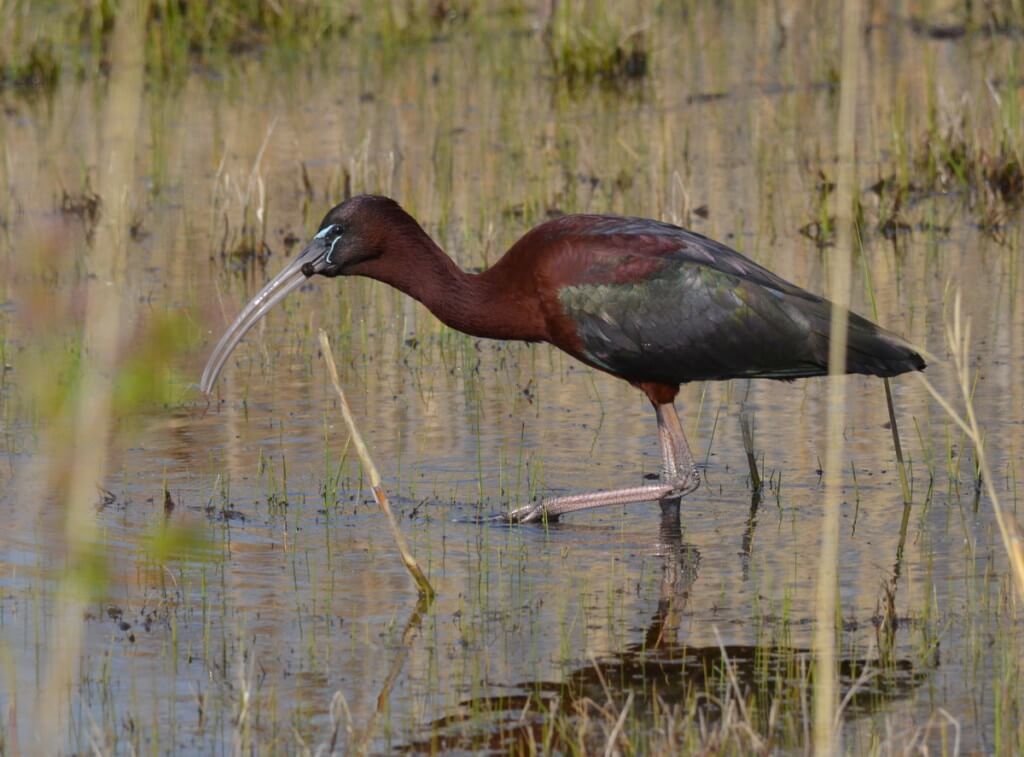Glossy Ibis We Sighted In Whitby, Ontario
Imagine our surprise when we got wind of a Glossy Ibis in Whitby, Ontario, one spring. The bird’s presence here in Canada is very unusual, and word spread quickly as to its location, and in some cases people drove long distances for a look at this beautiful wading bird.
The Glossy Ibis had many wetlands to choose from in the Whitby area, but it was a small seasonal wetland that captured the Ibis’s interest, and that is where it remained for at least three weeks. This over-sized puddle is fondly referred to as Sobey’s Pond.
After one failed attempt at seeing this bird, Bob and I got up earlier than usual another day for a second drive east to take a look for this bird. Even before we parked the car, a lineup of birders along one side of the flooded field gave away the location of this tropical bird.
Glossy Ibises are permanent residents throughout Florida and the Caribbean islands, but some populations migrate further north during breeding season to occupy marshes and wetlands along the Atlantic and Gulf coasts. On occasion, the odd vagrant is found inland such as this specimen that was way out of its normal range being in Canada.
A Glossy Ibis is a medium-sized wading bird that stands about 20 inches tall. One of its features that I find intriguing is the long, slender, downturned bill. The fact that an Ibis’s grey bill resembles a scythe or sickle gave rise to its Latin name Plegadis falcinellus, words that refer to the distinctive bill.
We had occasion to see a Glossy Ibis at Lake Chapala in Mexico one winter, and although it was a striking bird, it was not as impressive as the one above, seen in Whitby during breeding season. In breeding plumage, a Glossy Ibis is a showstopper.
It was a warm, sunny day when we saw this bird, and the early morning light really accentuated the iridescent green, purple and bronze feathers of the Ibis’s wings, lower back and tail, again a transformation that occurs in breeding season.
Bob and I spent a good two hours watching the Ibis as it foraged in the shallow waters of the flooded plain. It stealthily and slowly picked its way across the marshy area from one side to the other, on its long olive-grey legs.
We were really impressed that the bird could eke out a substantial source of food right there in the seasonally-flooded area bounded by highways on all four sides. Time and time again, the Ibis came up with what appeared to be a freshwater leech, squirming and contorting its body that was held tightly in the Ibis’s bill.
It’s long, curved bill is indispensable when it comes to foraging. An Ibis forages by touch using sensors on the bill to locate prey deep in soft mud. These same sensors enable the bird to swiftly close the bill on any prey detected, while the ridged edges of the bill hold the food securely. A wide variety of creatures in our neck of the woods would satisfy the needs of an Ibis, with everything from a variety of insects to snails, frogs, small snakes and lizards all providing the necessary protein.
It was a wonderful way to pass the morning, chatting with fellow birdwatchers and photographers while the Glossy Ibis ate its fill. It could be a long time before another one of these tropical birds is seen this far north in Canada.
Frame To Frame – Bob and Jean












incredible…truly
Thank you. I’m glad you are finding our stories of interest to you.